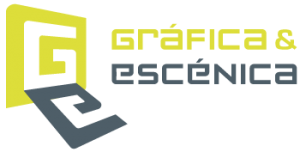
- 19/07/2017
- By Jorge Yubero
- Publicidad
TRABAJO EN EQUIPO
La considerable reducción de costes y la necesidad de atraer clientes, son los motivos principales de que en los últimos años no se tenga tan en cuenta la importancia del trabajo en equipo.
Y es que, mientras que la mayoría de negocios llevan a cabo sus labores de manera legal y transparente, durante la crisis, han proliferado los negocios no regulados por la legislación, y la asunción por parte de empresas, de servicios que no habían proporcionado hasta entones, incurriendo en la intrusismo laboral y en la falta de cualificación.
Esto no afecta solo a los negocios que llevan años dedicados a su sector concreto de manera legal, sino a los propios clientes, que muchas veces confían en estas empresas o personas, arriesgando sus recursos y reputación, consiguiendo unos resultados nefastos.
Utilización de elementos gráficos y tipografías
No para todas las empresas y para todos los eventos sirve igual el mismo tipo de elementos gráficos y tipografías. Se deben adaptar a las necesidades concretas y específicas de cada empresa o evento.
Hay que tener en cuenta, por ejemplo, en el caso de eventos, si se trata de su primera edición o lleva cierta historia detrás, a la hora de utilizar colores, letras, estilos, etc.
O en el caso de empresas, por ejemplo, su público objetivo o la naturaleza que debe tener la campaña que pretenden lanzar (agresiva, impactante, tierna, graciosa…).
Y a partir de ahí, mantener el equilibrio entre creación y lo ya existente, entre innovación y tradición.
Esto solo se puede conseguir mediante un trabajo en equipo, y tras una cierta trayectoria. En Gráfica y Escénica, tenemos una sede física en la que contamos con un equipo completo de profesionales cualificados, afianzados en el sector y cuya garantía, respaldada por su historia y sus clientes, es precisamente la colaboración de todos sus integrantes.
De esta forma, cada profesional tiene claramente definidas sus labores, compenetrándose con el resto del equipo, y consiguiendo así resultados de gran calidad que solo mediante un trabajo conjunto se puede alcanzar.
